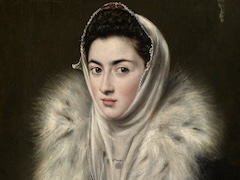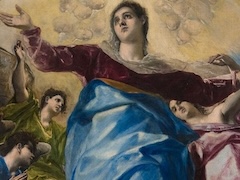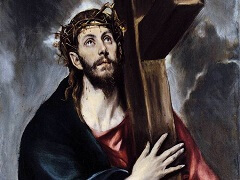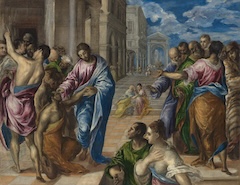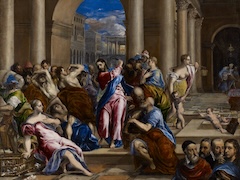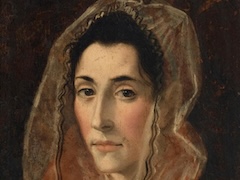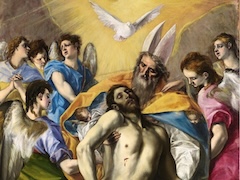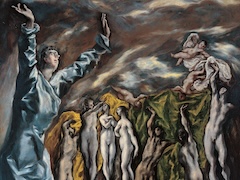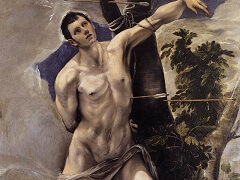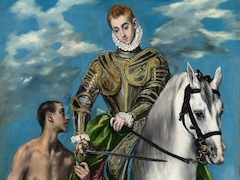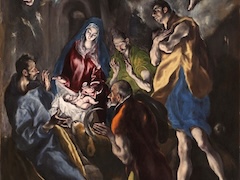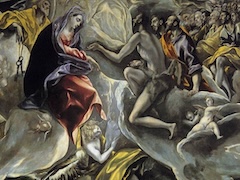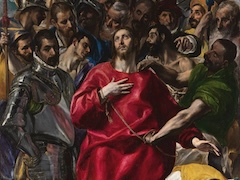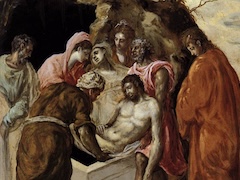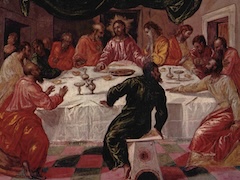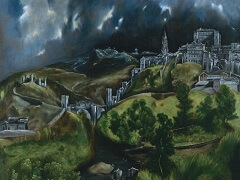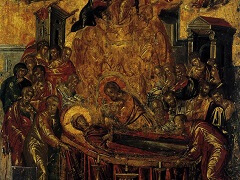Holy Trinity, 1755-78 by El Greco

The influence of Michelangelo, Durer, or Taddeo Zuccaro is usually evoked with respect to the conception and the composition of this canvas - one of the set painted for the retable of Santo Domingo el Antiguo - as well as to the attitudes and the anatomy of the figures. More impressive and certain than this borrowing, however real and instrumental it may have been, is the impact of El Greco's creative will, which makes this work already so personal and so mature.
One particular aspect of El Greco's pictorial genius is revealed here with special care. This is the feeling of adhesion, of the figure's continuity with the substance, as it were, of another figure or of the surrounding milieu.
This feeling, which was later to become the all-permeating aesthetic and psychological force of El Greco's art, is given here still in its early stage of expression, touching only small portions of the picture's field. It is present in the tightly fastened bunch of cherubs' heads at the foot of the dead Christ, the toes of his foot, the sole of the angel facing Christ, the half-visible hand of the Father sup-porting his Son's body. Technically, this remarkable pictorial success is attained by opposing minute zones of high lights - almost splashes of light to the dark and thick outlines closely surrounding them.
A feeling of grayness - cadaverous and ashy - floats above the entire scale of colors and seems even to subdue the glitter of golden luminosity which inundates all the forms. As if in contrast to the exuberant robustness of the anatomies, El Greco seems to have wished to convey to us, through the voice of this gloomy gray, the sense of present death - of the dead Body mourned in front of us.

